By Kerry Schofield
The
year was 1958.Famous Florida Artist Joe Brown, 8, lived next to a county dump site in Tampa,
Fla. Brown found old junk, fixed it up and sold it. Brown knew he had a
higher calling in life — he was destined to be an artist.
Brown, who is now 60, makes art from trash at his Hong Kong Willie Art Gallery. He has embellished the outside of the gallery with splashes of Caribbean-color paint and found objects reminiscent of Key West.
Brown
is as colorful as the gallery — he wears a bright tropical shirt with
red, white and blue plaid shorts. Patrons tell him they can smell the
salt water when they drive up. The gallery, however, is perched inland
near Morris Bridge Road and Interstate 75 where a rusty-hair hen named
Fred, first thought to be a rooster, patrols the property. Fred,
abandoned five years ago by tourists, trots between the gallery and
adjacent hotel leaving a trail of droppings behind her.
Brown
lived on the Gunn Highway Landfill from 1958 to 1963. The Hillsborough
County landfill operated for four years and was closed in 1962. “It was
astounding how quick they could fill the 15 acres in pits that were
enormous,” Brown said.
An
apartment complex now sits on top of the old landfill. A report by the
Florida Department of Environmental Protection indicated that a lining
was placed underneath the complex when it was built to block methane gas from leaking. The gas is a byproduct of rotting garbage.
As a child, Brown
lived on his father’s dairy and beef farm. Brown said during heavy
rain, the low land on the farm flooded the neighboring Gunn Highway. In
1957, Hillsborough County officials offered to elevate the low land to
stop the flooding by turning it into a landfill. When the property was
sold in 1984 by Brown’s father, soil testing revealed heaps of old paper
and punctured cans of spray paint.
“They
dug up and took out newspapers like the day they were put in,” Brown
said. “It reminded me of nuclear bombs that were going to go off. They
dumped everything in the landfill.”
As
a child, Brown foraged at nearby dumpsters. County workers saved junk
for him that people dropped off. One day, Brown’s parents got a call
from his elementary school teacher and told them that Brown had $100 in
his pocket and that he must be stealing.
Brown
picked up the saved junk after school and turned it into something new.
Contrary to his elementary school teacher’s accusation, he wasn’t a
thief after all. Instead he was a young entrepreneur who sold other
people’s trash.
“There was so much excess coming into the landfill,” Brown said. “There was so much waste from our society.”
However,
Brown’s mother wanted him to pursue his talents and dreams, not money.
But he developed a business sense during his young junk collecting days
and told his mother, “I’m not going to be an artist. I’ve read that
artists starve to death.”
Brown’s
mother became concerned. He said his mother knew “the value of
happiness and the travels of life” and sent him to a summer art class.
The
art teacher inspired awe in Brown. She taught him how to reuse baby
food jars by melting the glass and adding marbles to the mix to create
paper weights. The teacher had traveled to Hong Kong, China and
Hiroshima, Japan after World War II. She saw how people were forced to
recycle and reuse items out of necessity after the war. This left an
impression on Brown.
It
was at this time that he personified the name Hong Kong Willie, which
harkens back to China where the mass production of merchandise occurs.
The “Willies” are people like Brown and other environmentalists who try
to reuse trash instead of throwing it into landfills.
After
high school, Brown went to college to study business but dropped out
after three years. He worked in the material handling industry until
1981. Although Brown had achieved a successful career and lifestyle, he
had become discouraged in 1979.
“The change came from knowing that I had come to the point of what people call success,” Brown said. “I wasn’t happy inside.”
He
had been diagnosed with depression in 1973, a condition that was caused
from high fructose intake and that lasted for more than four years.
In
1985, Brown and his artist wife, Kim, bought the half-acre property off
Fletcher Avenue and Morris Bridge Road. For two decades the two small
wooden shacks, built around 1965, that now house the gallery operated as
a bait and tackle shop.
Nowadays,
Brown raises and sells worms by the pound mainly for composting. He
recycled 250 thousand pounds in the worm bed in 2009. Brown still sells
the worms for $4.50 a cup for fishing.
In
1981, Brown resurrected the Hong Kong Willie name from his childhood
art class. In the early 1980s, both he and his wife, Kim, began
upcycling trash into art. Brown entered another world when he left his
mainstream lifestyle behind — he joined the art scene and booked rock
bands at the same time.
The
Brown family spent half their time in Tampa and the other half in a
small home on Boot Key Harbor in Marathon. Brown gained the reputation
of the Key West lobster buoy artist.
“I had a total different appearance when in Key West,” Brown said. “I used to have hair down to my waist.”
When Brown came back to Tampa, he lived in the woods for months at a time, much like Henry David Thoreau in “Walden,” who had lived a simple lifestyle in a one room cabin near Walden Pond in Concord, Mass.
Back
in Key West, Brown became friends with local fishermen. He and others
organized efforts to clean up plastic foam buoys that had collected in
the waterways from years of fishing.
“You would go and find buoys floating in the mangroves, up on the shore and they had trashed up everything,” Brown said.
The
Earth Resource Foundation reports that plastic foam is dumped into the
environment. It breaks up into pieces and chokes animals by clogging
their digestive system.
Brown
sells the buoys from the Hong Kong Willie Art Gallery for $8.00 a
piece. He said he has sold from 30 to 40 thousand buoys in the last ten
years. Some of the buoys are more than 50 years old and are collected by
tourists from China and Japan.
“If
you go to the Keys right now and you see a buoy floating, you’ll see
someone slam on the brakes to get it,” Brown said. “They’re the most
prized buoys of the world.”
Brown
made a holiday buoy tree 12 years ago from the Key West buoys. Hundreds
of buoys are strung on rope and wrapped around a utility pole next to
the gallery. Brown hopes the novelty of the buoy tree will inspire and
stimulate children to find new ways to reduce, reuse and recycle
garbage.
In
Kate Shoup’s “Rubbish! Reuse Your Refuse,” the author said much of what
we get is designed to be scrapped after only a few uses. We easily
throw away pens, lighters, razors and dozens of other items. Shoup said
Americans consume 2 million plastic drink bottles every 5 minutes.
Likewise,
Brown finds uses for items that would otherwise end up in a landfill.
He buys used burlap bags from coffee and peanut producers. He sells them
to the U.S. National Forestry Service for the collection of pine seeds
and Samuel Adams for hops production.
Brown and his wife, Kim, also make art hippie bags from the burlap sacks and sell them in the gallery. Kim,
also an artist, paints fish, turtles, crows, parrots and the like on
driftwood and on wood that Brown has salvaged from saw mills and from
old buildings in Key West.
Brown
said art is viewed and appreciated by certain people. “If it all came
out the same, it would be like bland grits all the time,” Brown said. He
likes to refer to the gallery art as reused rather than recycled, which
takes waste and turns it into an inferior product. Reuse on the other
hand involves remaking an item and using it again for the same intended
purpose.
“I
also try to stay away from imprinting a definite use for a definite
item,” Brown said. He explains that 2-liter bottles are not limited to
making bird feeders. The bottles can be used for art and craft projects
as well.
Brown said the larger message he wants to communicate is that the disposal of garbage today is creating a toxic environment.
“I still have the original Gerber baby food bottle that I melted” Brown said. “It’s sitting on my mom’s little table.”
Hong Kong Willie photomontage
I'm
working on a feature story about Hong Kong Willie aka Joe Brown and
family who are reuse artists. I recently spent some time interviewing Joe Brown at his studio in Tampa, Fla. We had a pleasant talk about his
working gallery. We sat outside and there was a nice breeze, although it
was a warm sunny day still here in Florida. Join me in the midst of
writing the story. I took a few pictures to share with you. Enjoy.
Reuse artists from the 1960s.
Morris Bridge Road and Interstate 75, Tampa, Fla.
The garden shrubbery consists of recycled glass bottles and aloe vera plants.
Buoy tree.
Hundreds of lobster buoys from Key West, Fla., strung on rope,
wrapped and tied to a utility pole.
Orange helicopter that once served in
Vietnam and later used by a radio station.
Key West lobster buoys hang from the small 1950s wood frame building.
Tourists buy the buoys for souvenirs. Some of the buoys are 50 years old.
The exterior of the roadside building is an artful blend of
Caribbean-color paint and found objects.
.
Seabird plaques, sea glass, melted bottles, painted driftwood
and rusty objects are a few of the items that decorate the wood panels.
Entrance into the small building, which is lined from ceiling to floor
with burlap sacks from South American coffee roasters.
Joe Brown and family also composts and sells worms.
They also buy South American burlap coffee bean sacks.
Hong Kong Willie reuse artists ,reuse the burlap
and make hippie beach bags.
Hong Kong Willie reuse artists use old clothes, buttons, baseball leather and
yarns to sew and decorate the burlap bags.
View photographs of the Hong Kong Willie art gallery
http://kerryschofieldjournal.blogspot.com/2010/09/hong-kong-willie-photomontage.html
Black Bird of Key Largo
$98,000 To buy contact Hongkongwillie
"Black Bird of Key Largo"
The allurement of the winds
blowing in the palm trees and the moon shining through and the "Black
Bird of Key Largo" looking upon.
Hong Kong Willie
**HONG KONG WILLIE artist Kim Brown, chose aged Florida sawmill stock as
canvas. Recovered Brass Hanger: Key West lobster trap rigging.
Originally connects and suspends rigging of spiny lobster traps in Key
West waters. Candy-like appearance due to multiple protective layers.
Assigned number in artist register by Fisherman ID tag, corresponding
burn-etched # rear of piece. Key recovered by Robert Jordan, acclaimed
treasure hunter: also in identification of piece and artist.
Dimensions:
24" L
8" W
4" H
Weight: 17+ LB
Famous Florida Artist,MY FOX TAMPA BAY,Charlie's World Fox News



















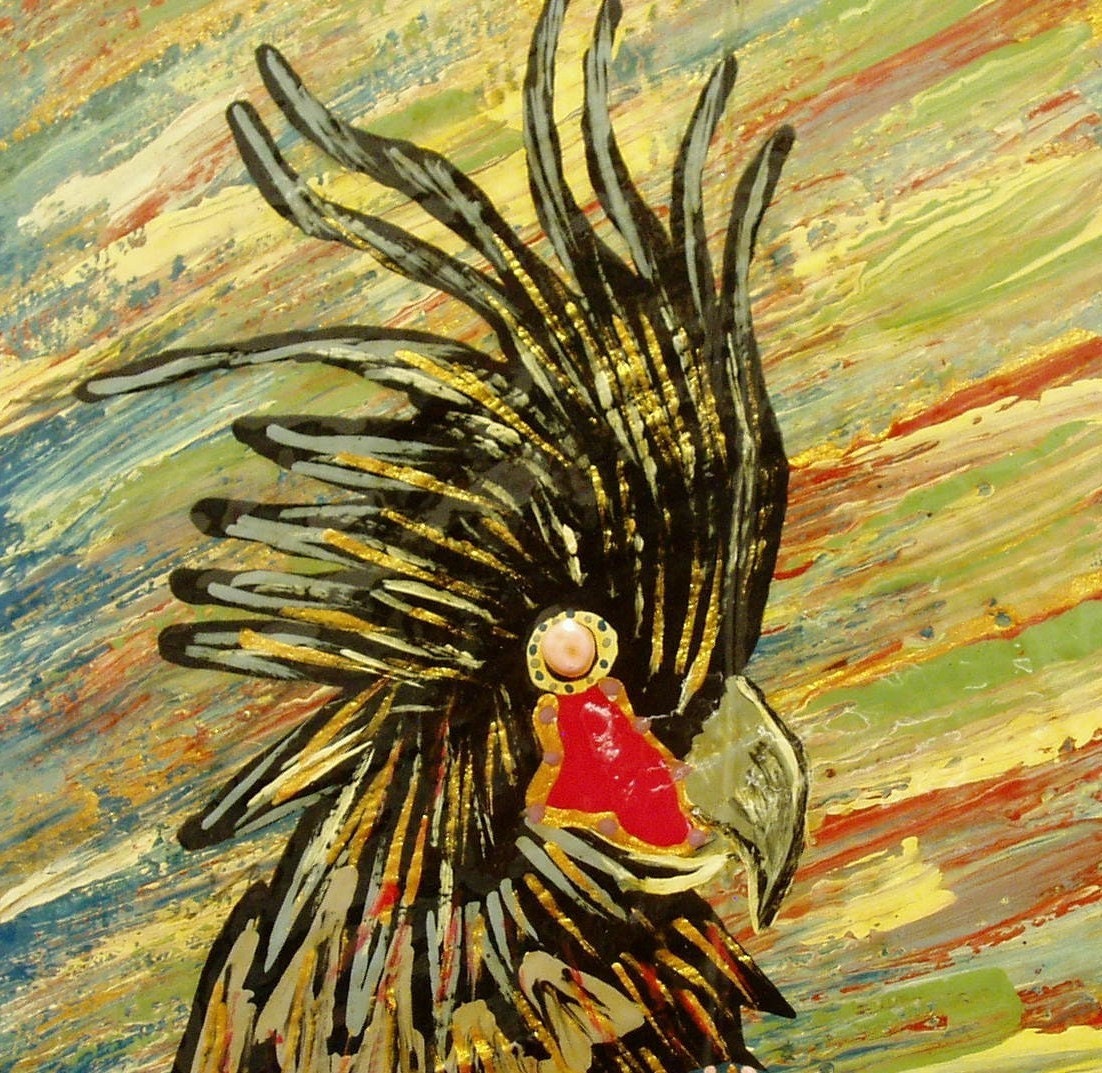
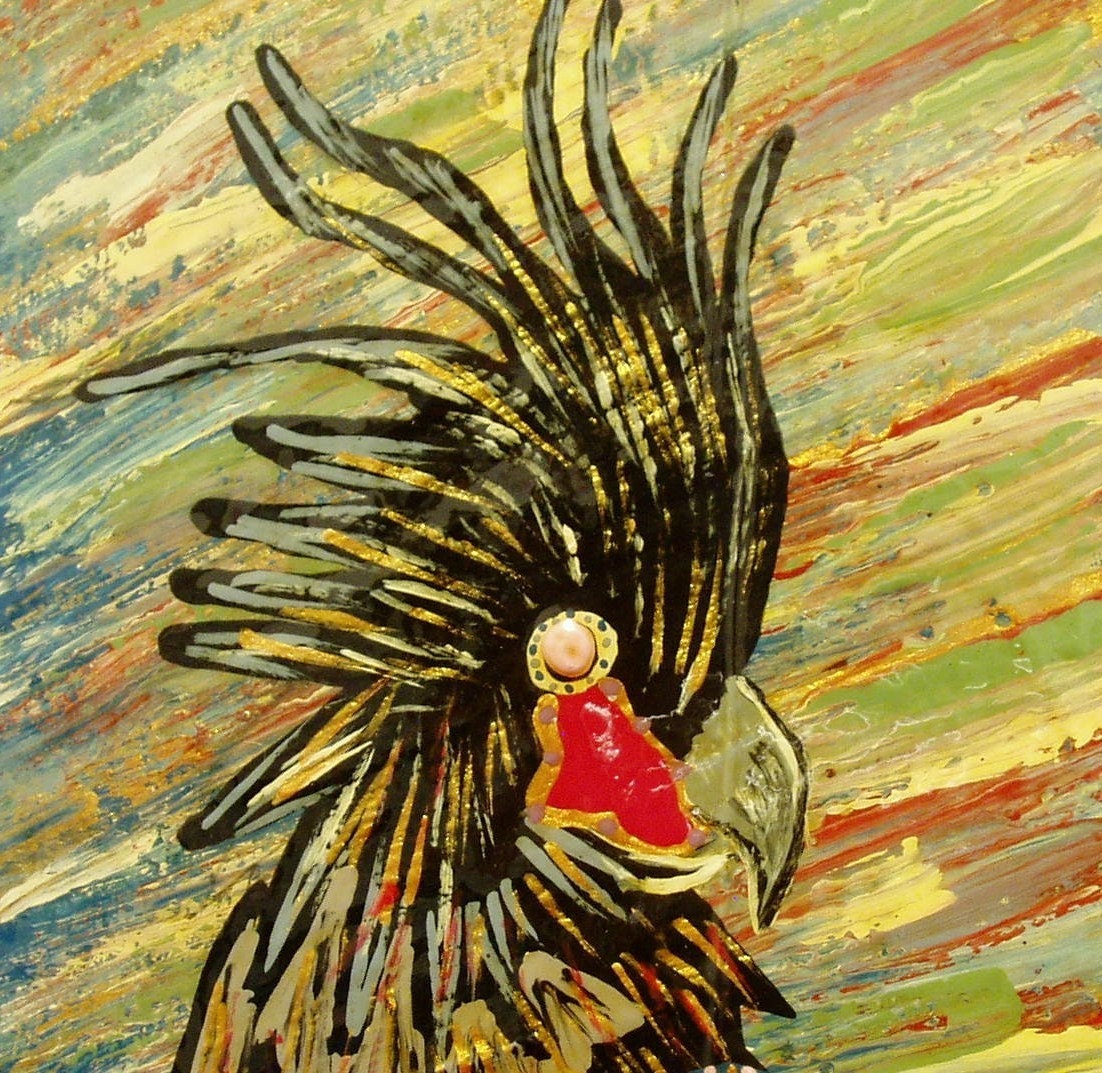
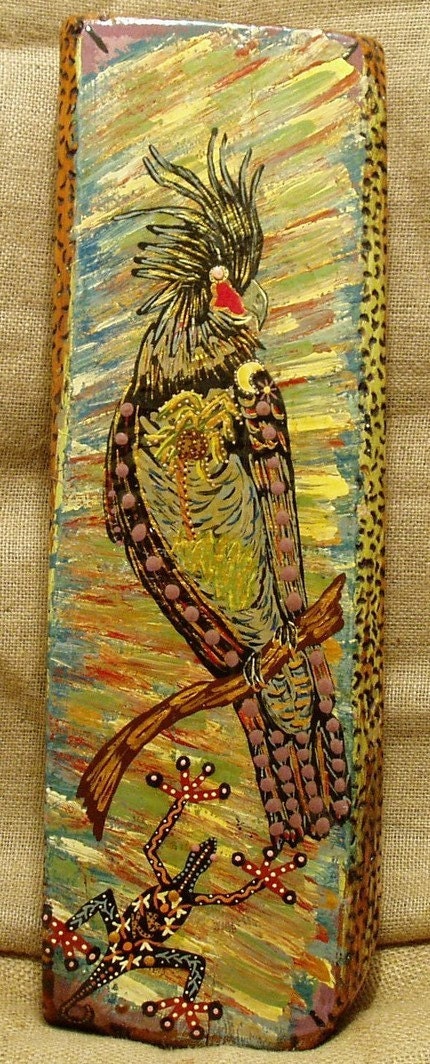
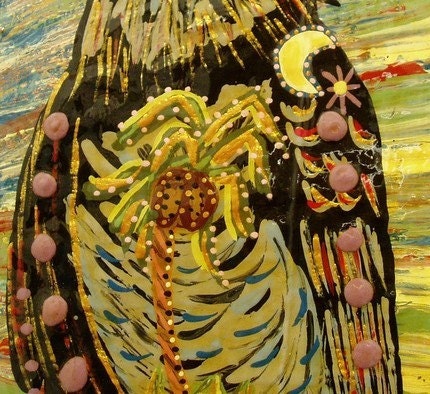
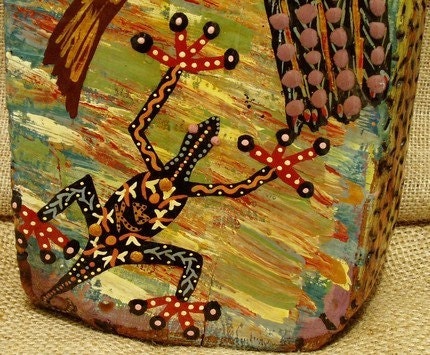


Hong Kong Willie is so much more than a roadside attraction.